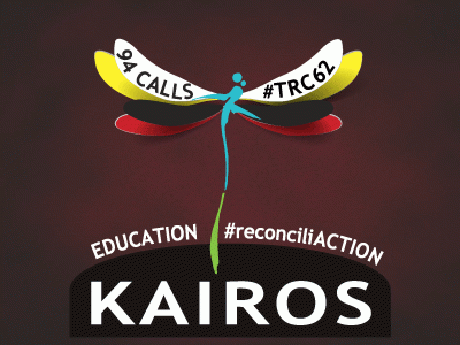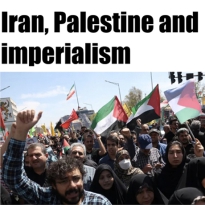Features
You are here
Learning the history of Indigenous peoples

July 22, 2016
Socialist.ca spoke with teachers in three provinces about the state of Indigenous history in the curriculum, and the growing campaign to implement the Truth and Reconcilation Commission in schools.
There is a new “Heritage Minute” on TV, featuring the experience of Indigenous children in residential schools. In 60 seconds it depicts the removal of traditional cultures through actions such as enforced cutting of hair and the speedy repetition of Christian prayers. It briefly tells the story of Chanie “Charlie” Wenjack who ran away from residential school in 1966 and died from exposure. The piece also includes a scene where a priest takes a boy into his room and conveys the fear of the child as he is forced onto a bed. The voiceover discusses the 150,000 children forced into residential school and the many deaths involved.
It is long past time for non-Indigenous people living in Canada to fully comprehend the horror and loss caused by the government-funded and Christian-operated residential school system. Historic Canada’s “Heritage Minute” could have said more about the terrible legacy the system left behind. But the fact that this “Heritage Minute” exists at all is a testament to the strength and persistence of Indigenous peoples in ensuring that their genocide is acknowledged by governments and the public.
Legacy of Red Power
The Red Power movement of the 1960s and 70s arose in Canada in direct response to the attempt of the Liberal government of the day to assimilate Indigenous peoples through its aptly named White Paper. Besides stopping the White Paper, the movement succeeded in First Nations gaining greater control over education in their communities, as an antidote to residential schools.
While provincial government curriculum must be taught in order to ensure federal government funding, First Nations secured funding for the construction of schools in their own communities. They also succeeded in hiring more Indigenous teachers and adding more curriculum relevant to Indigenous peoples, particularly traditional languages. This “system” has been grossly underfunded over the years, leading to ongoing demands from Indigenous communities for greater control and funding for teaching their children and youth.
Truth and Reconciliation Commission
The 2015 Truth and Reconciliation Commission Report contains a number of Calls to Action regarding both the education system for Indigenous peoples, and the education of non-Indigenous people about Indigenous history. Under “Education for reconciliation” can be found the following calls to action:
“#62. We call upon the federal, provincial, and territorial governments, in consultation and collaboration with Survivors, Aboriginal peoples, and educators, to:
1. Make age-appropriate curriculum on residential schools, Treaties, and Aboriginal peoples’ historical and contemporary contributions to Canada a mandatory education requirement for Kindergarten to Grade Twelve students.
2. Provide the necessary funding to post-secondary institutions to educate teachers on how to integrate Indigenous knowledge and teaching methods into classrooms.
3. Provide the necessary funding to Aboriginal schools to utilize Indigenous knowledge and teaching methods in classrooms.
4. Establish senior-level positions in government at the assistant deputy minister level or higher dedicated to Aboriginal content in education.
63. We call on Canada to maintain an annual commitment to Aboriginal education issues, including:
1. Developing and implementing Kindergarten to Grade Twelve curriculum and learning resources on Aboriginal peoples in Canadian history, and the history and legacy of residential schools.
2. Sharing information and best practices on teaching curriculum related to residential schools and Aboriginal history.
3. Building student capacity for intercultural understanding, empathy, and mutual respect.
4. Identifying teacher-training needs relating to the above.
64. We call upon all levels of government that provide public funds to denominational schools to require such schools to provide an education on comparative religious studies, which must include a segment on Aboriginal spiritual beliefs and practices developed in collaboration with Aboriginal Elders.”
How have the provinces responded?
Education falls under the jurisdiction of provincial governments in Canada, so Socialist.ca interviewed non-Indigenous teachers in three provinces—Newfoundland, BC and Ontario—to obtain an overview of how students currently learn about Indigenous history.
For the longest time, there was virtually no coverage of Indigenous history, save perhaps the “Riel Rebellion.” By the 1980s, teachers in public schools might choose to cover more history but this often took the form of information on “how things used to be”; i.e. the foods eaten by Indigenous peoples, how they made their clothes, where they were “located”, but nothing about colonization and resistance—either in the past or the present.
All four teachers agree that while curriculum itself has improved over the last few years to include some aspects of colonization, serious issues remain. The biggest concern is that the curriculum is not mandatory. Furthermore, teachers are not trained in how to deliver the curriculum. The result is a hit-and-miss approach that does a tremendous disservice to Indigenous peoples and does nothing to help non-Indigenous people understand the history of both colonization and the strength of and resistance by Indigenous peoples.
Newfoundland teacher D’Arcy Briggs, stated “I can say there is a big disconnect over what's on paper and what occurs in the classroom. For example, in Grade five there is an entire Curriculum Outcome (4.0) about First Nations in Labrador and Newfoundland, and it is suggested that teachers take 14 hours to complete the unit; however no part of First Nations history is “publicly examined,” meaning no part of this history is on a test administered by the province.”
“Teachers are free to decide what they want to focus on in their own classroom. Same in grade 10 (called level 1 in NL), which is Canadian History. It starts with the Sifton-Laurier push for immigration. Minority experiences, and certainly those faced by First Nations, are present throughout the course. The only public-exam course for history is World History 3201, which is basically a very Eurocentric telling of the World Wars and Cold War…Not that teachers don't care about these issues, but many don't know how to go about teaching it outside of the blurbs in the guide.”
Briggs went on to say that “Most courses detailing First Nations were last updated anywhere from 2004 - 2011. Again, while on paper a lot of these have shown improvements in what should be taught, many teachers either don't see a need to teach it, don't have the material or knowledge to teach it, or the most likely, the time to teach 'something new.'”
This was echoed by BC teacher Patrick Schreck, and another teacher from BC: “There is no mandatory actual content...so (teaching) would vary greatly in implementation.” As to why the curriculum has been revised at all, Schreck notes “(Premier) Christie Clark's and BC Liberal government's LNG (natural gas) überplan may be part of the motivation behind their newfound interest in aboriginal curriculum.”
The situation is the same in Ontario. As one teacher told Socialist.ca, “ There is some material in the mandatory grade 10 history course but little oversight to ensure it’s taught, so the delivery will vary substantially between schools and regions. There are two 'native studies' courses that can be offered but those are electives in grade 11- and 12 I think and again they may disappear if students don't take them. That said, online options now mean those courses are available literally across the board or boards, so now more students actually do get those credits than say ten years ago. Here in Toronto there is a 'First Nations ' alternative school with much more curriculum and training for staff. But it is just the one school. In general there is a good deal of good curriculum and good material but delivery is uneven.”
What next?
Given the increasing demands made on teachers (without commensurate training and resources), and without a required mandate by ministries of education, it is no wonder teaching of Indigenous history—particularly to non-Indigenous students—is at best uneven and at worst non-existent.
Alberta’s NDP government recently announced a requirement for mandatory education regarding residential schools from kindergarten to grade 12. Alberta was home to 25 residential schools, more than any other province.
Consistent with the Calls to Action by the Truth and Reconciliation Commission’s report, numerous Indigenous organizations and allies such as Kairos are calling on all provincial governments to provide mandatory curriculum and training of teachers.
Download and circulate a petition calling for implementation of Call to Action $62 through making education on truth and reconciliation mandatory
Section:
Topics:










